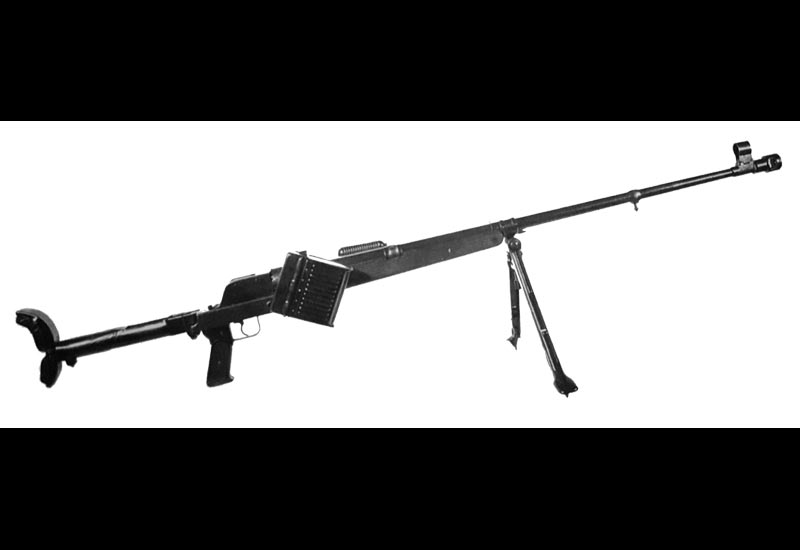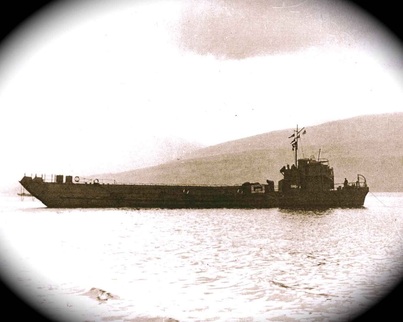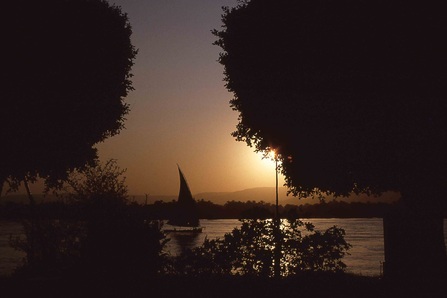Not of much use against A11s, unless you can get a shot on the tracks.The Paratroops would have had AT Rifles such as the Panzerbüchse 39:
You are using an out of date browser. It may not display this or other websites correctly.
You should upgrade or use an alternative browser.
You should upgrade or use an alternative browser.
Sir John Valentine Carden survives.
- Thread starter allanpcameron
- Start date
- Status
- Not open for further replies.
Threadmarks
View all 220 threadmarks
Reader mode
Reader mode
Recent threadmarks
3 June 1941. Leyland, England. 5 June 1941. Chertsey, England. 7 June 1941. Operation Battleaxe. Day 1. 8 June 1941. Operation Battleaxe. Day 2. 9 June 1941. Operation Battleaxe. Day 3. (Part 1) 9 June 1941. Operation Battleaxe. Day 3 (part 2) 10 June 1941. Operation Battleaxe. Day 4. 12 June 1941. Operation Battleaxe. Day 5.
29/30 April 1941. Greece.
allanpcameron
Donor
29/30 April 1941. Greece.
The arrival in the late afternoon of a reconnaissance unit of the 2nd Panzer Division in Athens underlined the fact that the battle for mainland Greece was mostly over. The crowds which had previously shown their appreciation for the Australians and New Zealanders, the British and even the Yugoslavs, who had passed through the capital were notably absent as the German motorcycle troops made their way to the Acropolis to raise the Nazi flag.
The Greek forces on the mainland were ordered to offer no further resistance by King George II over a radio broadcast. The King assured the people of Greece that the fight against the German and Italian invaders would carry on. He noted that the Greek Army, Navy and Air Force still existed as a force-in-being, and with the help of their allies, would endeavour to throw the invader back.
It was noticeable during the day Luftwaffe activity was much less that had been seen the last few days. With the failure of the paratroopers to capture the Corinth Canal bridge intact, despite the overwhelming support of the Luftwaffe, many aircraft had to be serviced, their crews rested and some squadrons were moving forward to air bases that had been captured and restored to operability.
During the day the three British Empire formations took cover and hoped not to be discovered before the Royal Navy came to pick them up after dark. The New Zealand 5th Brigade had congregated at Porto Rafti, with one battalion deployed to protect the other two. The remaining elements of 1st Armoured Brigade were at Megara, where half the 4th Hussars’ tanks provided security, along with the men of the 1st Rangers. The only fear was that the paratroopers would try to infiltrate down to the town and the beach, but as the day wore on, it was clear that there wasn’t much fight left in them. The thoroughly exhausted Australians of 17th Brigade and the men of the Kings Dragoon Guards were concentrated at Navplion awaiting the Royal Navy. One squadron of tanks had been left intact to protect the beach, the others were all stripped of anything useful that could be carried off, and primed for demolition.
At Navplion when the Royal Navy arrived, only the men and their personal equipment was able to board the vessels sent to collect them. At Megara the A Lighters, early versions of what would become known as tank landing craft, arrived but there was a limited amount of space, so in fact only twelve A13 tanks were lifted off the beach, along with one armoured car from the New Zealand Divisional Cavalry. The 5th Brigade were able to board the three landing ships fully equipped. In the early hours of the morning of 30 April the last troops of W Force sailed out of Greek waters. The Luftwaffe’s attempts to destroy the ships at sea led to a running battle for much of the morning, and once again the German aircraft managed to sink and damage a number of ships, including HMS Glenearn, which had to be towed to Suda Bay.

An A9 exits an A Lighter landing craft in August 1941. Just to show what an A Lighter looks like. (The photo is IWM E4611)
The arrival in the late afternoon of a reconnaissance unit of the 2nd Panzer Division in Athens underlined the fact that the battle for mainland Greece was mostly over. The crowds which had previously shown their appreciation for the Australians and New Zealanders, the British and even the Yugoslavs, who had passed through the capital were notably absent as the German motorcycle troops made their way to the Acropolis to raise the Nazi flag.
The Greek forces on the mainland were ordered to offer no further resistance by King George II over a radio broadcast. The King assured the people of Greece that the fight against the German and Italian invaders would carry on. He noted that the Greek Army, Navy and Air Force still existed as a force-in-being, and with the help of their allies, would endeavour to throw the invader back.
It was noticeable during the day Luftwaffe activity was much less that had been seen the last few days. With the failure of the paratroopers to capture the Corinth Canal bridge intact, despite the overwhelming support of the Luftwaffe, many aircraft had to be serviced, their crews rested and some squadrons were moving forward to air bases that had been captured and restored to operability.
During the day the three British Empire formations took cover and hoped not to be discovered before the Royal Navy came to pick them up after dark. The New Zealand 5th Brigade had congregated at Porto Rafti, with one battalion deployed to protect the other two. The remaining elements of 1st Armoured Brigade were at Megara, where half the 4th Hussars’ tanks provided security, along with the men of the 1st Rangers. The only fear was that the paratroopers would try to infiltrate down to the town and the beach, but as the day wore on, it was clear that there wasn’t much fight left in them. The thoroughly exhausted Australians of 17th Brigade and the men of the Kings Dragoon Guards were concentrated at Navplion awaiting the Royal Navy. One squadron of tanks had been left intact to protect the beach, the others were all stripped of anything useful that could be carried off, and primed for demolition.
At Navplion when the Royal Navy arrived, only the men and their personal equipment was able to board the vessels sent to collect them. At Megara the A Lighters, early versions of what would become known as tank landing craft, arrived but there was a limited amount of space, so in fact only twelve A13 tanks were lifted off the beach, along with one armoured car from the New Zealand Divisional Cavalry. The 5th Brigade were able to board the three landing ships fully equipped. In the early hours of the morning of 30 April the last troops of W Force sailed out of Greek waters. The Luftwaffe’s attempts to destroy the ships at sea led to a running battle for much of the morning, and once again the German aircraft managed to sink and damage a number of ships, including HMS Glenearn, which had to be towed to Suda Bay.
An A9 exits an A Lighter landing craft in August 1941. Just to show what an A Lighter looks like. (The photo is IWM E4611)
Unwinnable battle but this time one converted into a pyric victory for Germany.So only the Peloponnese now remains in allied hands? Well it was bound to happen, but still a pity to see.
I think they sent 2 of the recoilless guns to Crete (or only 2 landed) from the then battery of 4 such weapons (in 2. Batterie/Fallschirmjäger-Artillerie-Abteilung) - whose main gun was the light howitzer - I believe they were Skoda 15 (7,5 cm)?Panzerfausts in 1941??? Development did noit start until 1942
Whilst not an AT gun the
7.5 cm Leichtgeschütz 40

7.5 cm Leichtgeschütz 40 - Wikipedia
en.wikipedia.org
was use in Crete so might possibly be used earlier
I looked it up some time ago for another thread and while I cannot recall the pertinent details I do recall that it was only just introduced into service with the Fjs and Mountain troops
Cleaning out the desert one assumes beyond that for Britain the war is effectively over (or at least stalemated) until Japan attacks. Time to prepare more surprises, build more tanks and help out the Russian's.And just like that, the Greek campaign is probably over.
Germans arrived in Athens 3 days late and a good portion of the Allies escaped with more equipment. I wonder what is next.
Just to keep everyone on their toes the official name of the A Lighter was the Tank Landing Craft Mk.I (and then later got retrospectively renamed as Landing Craft Tank Mk.I, to further keep everyone confused). And of course there were half a dozen other landing craft of various types all with similarish names also in service - LCM(1), MLC, LCA, LCS and so on.Does anyone know how many "Lighters" the UK had in total?
However in OTL there were 20 TLC Mk.Is in the Med and 17 ended up sunk during the Greece evacuation, there were another 10 in various other places. The TLC Mk.II were in production by that point, so new Mk.IIs were sent out to replace losses and build up an amphibious capability.
allanpcameron
Donor
Could you point me in the way of your info please? It doesn't tally with https://www.uboat.net/allies/warships/class/682.html which I was using, I'm always keen on other sources.Tank Landing Craft Mk.I...However in OTL there were 20 TLC Mk.Is in the Med and 17 ended up sunk during the Greece evacuation, there were another 10 in various other places. The TLC Mk.II were in production by that point, so new Mk.IIs were sent out to replace losses and build up an amphibious capability.
Allan
Could you point me in the way of your info please? It doesn't tally with https://www.uboat.net/allies/warships/class/682.html which I was using, I'm always keen on other sources.
Allan
found this:

What is a TLC?
The Tank Landing Craft (TLC) Mk1 were prototype vessels, constructed in the latter half of 1940 by the British military for combined operations. Churchill was keen to avoid another disaster like...
www.forgottenflotilla.com

TLC in Action
The first twenty Tank Landing Craft arrived in Egypt on convoys in early 1941 and immediately after reassembly took part in operations. The first 5 TLCs to be completed (TLC A1, A5, A6, A16 and A19)...
www.forgottenflotilla.com
It was the source @wietze posted, plus;Could you point me in the way of your info please? It doesn't tally with https://www.uboat.net/allies/warships/class/682.html which I was using, I'm always keen on other sources.
Allan
The allies still hold the Peloponnese, so the campaign isn't quite over yet.And just like that, the Greek campaign is probably over.
Germans arrived in Athens 3 days late and a good portion of the Allies escaped with more equipment. I wonder what is next.
Oh yeah, thats true. Also the Peloponnese from what I am reading is still evacuating troops as of TTL's April 30 while IOTL's April 30 it was being steamrolled by the Germans... so the delay actually around a week more IOTL.The allies still hold the Peloponnese, so the campaign isn't quite over yet.
Yep. This time demolition efforts can be far more thorough, which will further delay any effort to take Crete.Oh yeah, thats true. Also the Peloponnese from what I am reading is still evacuating troops as of TTL's April 30 while IOTL's April 30 it was being steamrolled by the Germans... so the delay actually around a week more IOTL.
Mm, I'm thinking 'proud in the effort, disappointed, but understanding in the result', at least on the allied side.A lot has been said in this thread that while we know what the allies did a fair bit better here, this is not a context known to anyone in this timeline. Seeing different people in the halls of power reacting to the Greek campaign would be interesting, in my opinion.
Also a recognition there really was no way to win but that they did at least damage the German's. Combined with a better desert war they can at least feel they're holding their own against Germany which is a start.Mm, I'm thinking 'proud in the effort, disappointed, but understanding in the result', at least on the allied side.
Threadmarks
View all 220 threadmarks
Reader mode
Reader mode
Recent threadmarks
3 June 1941. Leyland, England. 5 June 1941. Chertsey, England. 7 June 1941. Operation Battleaxe. Day 1. 8 June 1941. Operation Battleaxe. Day 2. 9 June 1941. Operation Battleaxe. Day 3. (Part 1) 9 June 1941. Operation Battleaxe. Day 3 (part 2) 10 June 1941. Operation Battleaxe. Day 4. 12 June 1941. Operation Battleaxe. Day 5.- Status
- Not open for further replies.
Share: